Today we’re talking about the BuddyBooks program from ObjectveEd. It’s an excellent way to help struggling readers or students with dyslexia practice their reading independently.
Years ago, one of my twin sons was diagnosed with dyslexia. After adjustments to our curriculum coupled with an Orton Gillingham phonics program, he is thriving and will be entering high school in the fall.
Last fall, I had my youngest son evaluated and found that he also has dyslexia. Even though I’ve been on this path before, it feels more challenging now. I’m not sure if it’s because I’m older, or because we have more children to manage, but I’m finding it hard to carve out time for daily reading practice with him. It’s difficult to find books that he can read phonetically that aren’t way below his interest level.
I started researching options and discovered BuddyBooks by ObjectiveEd
I was compensated for my time reviewing BuddyBooks with Daniel and sharing our experience here. All opinions are my very own honest experience, as always.
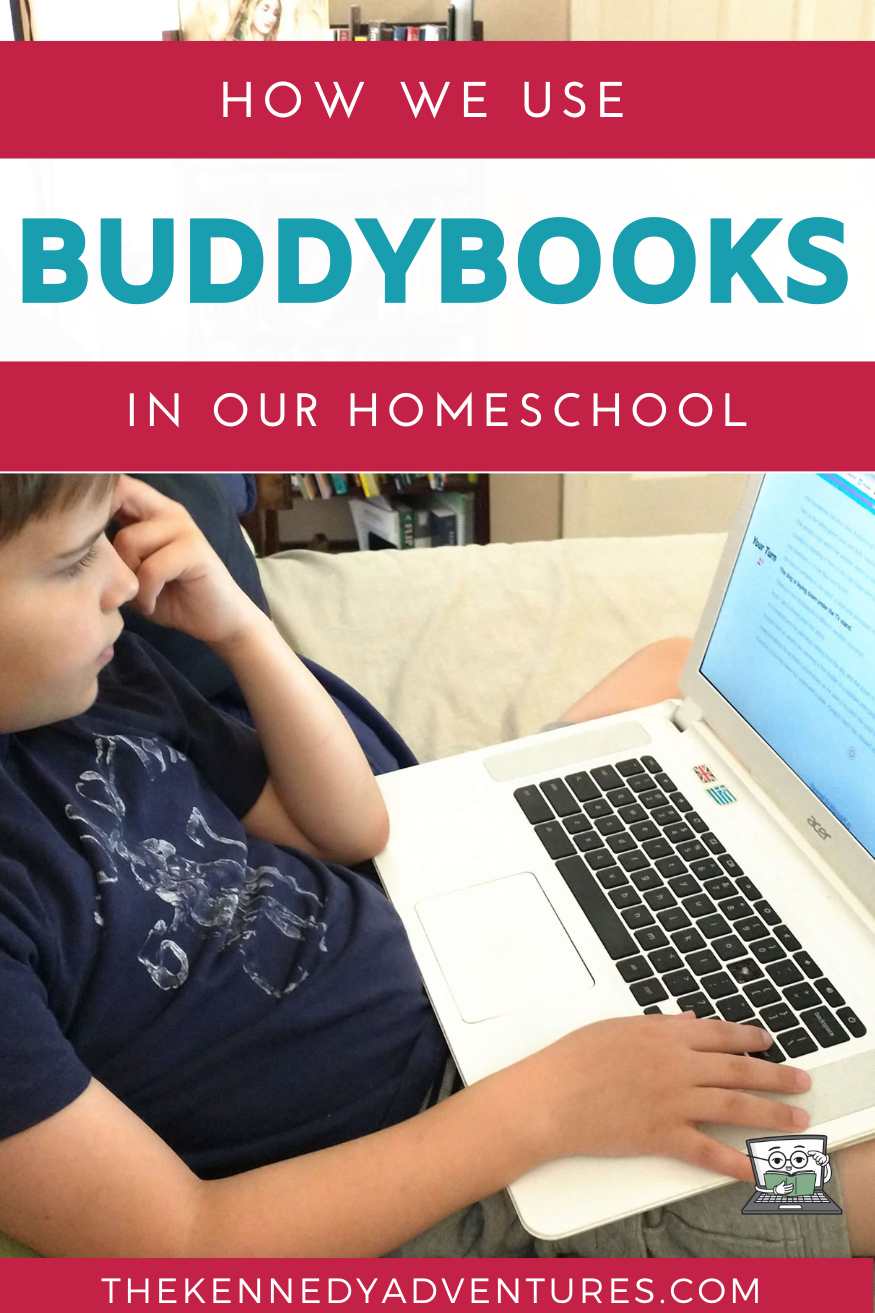
What IS BuddyBooks?
BuddyBooks was created by ObjectiveEd to help struggling readers, such as students with dyslexia,, ASD, ADHD, or those with a reading impairment. Inside the platform, the computer and the student “buddy read” books which keeps the child engaged in the story. The BuddyBooks library allows parents to select books from classic literature along with more modern books with strong family values. At the same time, the AI in BuddyBooks provides a review mode to help the child improve through self-monitoring” and reading while listening. BuddyBooks encourages children to independently read at least 15 minutes a day, increasing fluency and prosody.
How Does BuddyBooks Work?
Inside the BuddyBooks online platform, the child alternates reading one sentence or paragraph at a time. This is a concept called buddy reading, and it’s something I’ve used in my homeschool since we began, even for my stronger readers.
With buddy reading, you’re able to model for your student, as well as monitor his progress and identify any trouble spots. It’s also less fatiguing for the student.
Buddy reading also allows children to stay engaged with the story, reading at their interest level, instead of having to stay at their reading-skill level, which can be frustrating.
Take a look at this quick video to see how it works:
View this post on Instagram
For students who struggle with reading fluency, consistent practice with short lessons is key.
How Do I use BuddyBooks in my Homeschool?
As the parent, I went ahead and got BuddyBooks set up prior to even mentioning anything to Daniel.
Setup is straightforward – you’ll add your child in as a student, and then get started.
Once you’ve added your child, then click on their name to add books to their dashboard. Once they’ve worked inside the program, you’ll be able to view their stats.
For our family, we strive to hop into our BuddyBooks program bright and early every morning. If we wait until later, it’s too easy to overlook.
I began by choosing books for Daniel, (see details below) and as we became accustomed to the program, I showed him how to log in and find books for himself. He’s able to log in and practice while I’m working with other siblings or taking care of household tasks.
How Do I Add More Books to our BuddyBooks Platform?
I found the process of adding books to the BuddyBooks platform pretty straightforward.
BuddyBooks has 200 books in their native platform currently, with an aggressive plan to add more, including books from small publishers and authors frequently found at homeschool conventions.
If your student has a qualifying diagnosis, you’ll be able to connect the Bookshare library to your BuddyBooks account. This opens up an enormous selection of books for your student.
If your child struggles with reading and you suspect that they may have dyslexia or a related reading impairment, ObjectiveEd wants to help.
They’ve partnered with NeuroLearning, an assessment app from Dr Brock Eide. The assessment is $50, and takes 45 minutes to administer. If your child is identified as having a learning disorder, BuddyBooks will reimburse you for the cost of the assessment, and you’ll be eligible for membership access with BookShare.
Grab all the details and get signed up here.
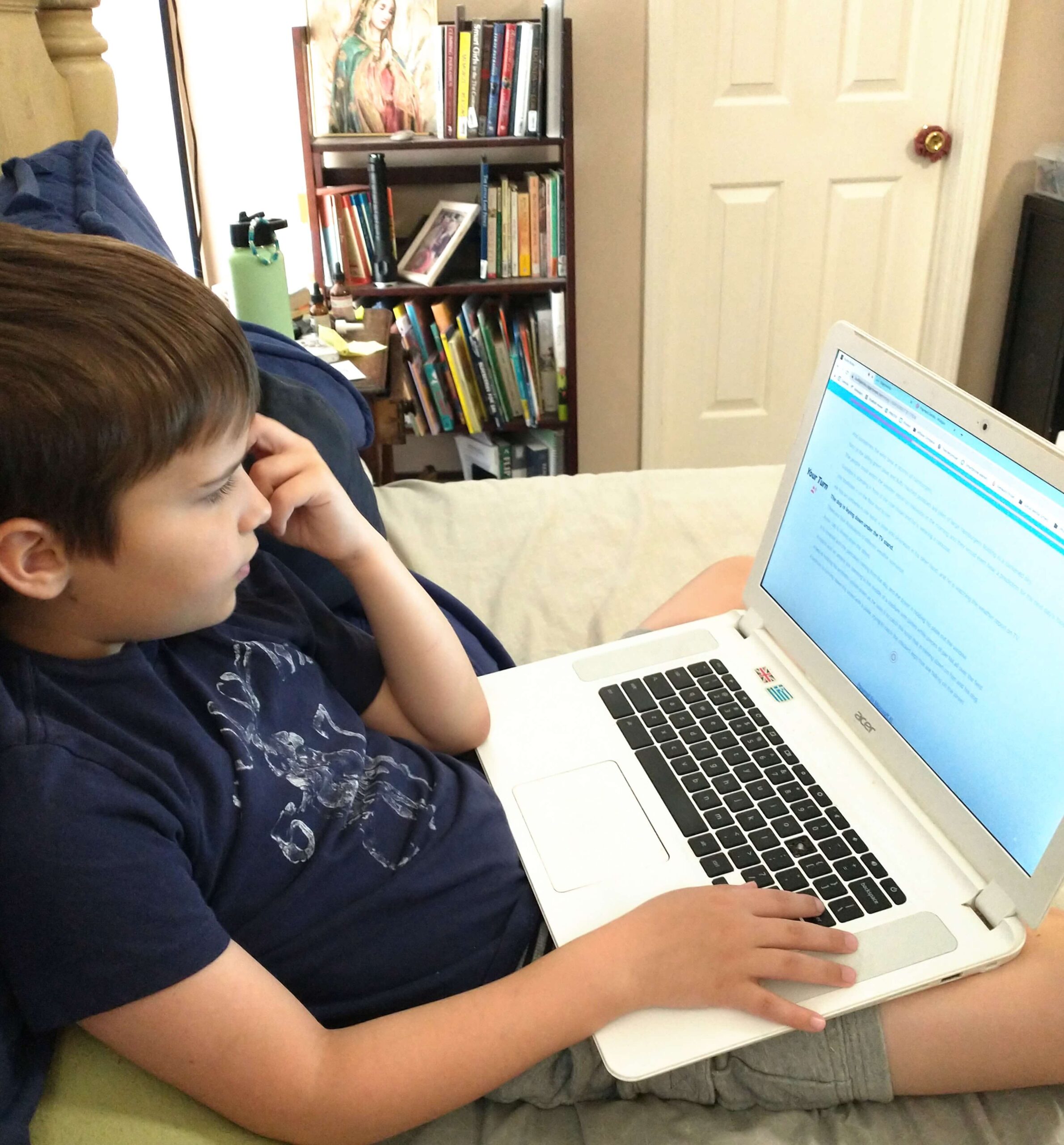
Issues We Experienced with BuddyBooks
I personally LOVED this program. I found it VERY easy to add in Daniel as a student and choose books for him. Since we have a dyslexia diagnosis, we were already familiar with using BookShare and found it easy to add books to the BuddyBook program.
Using BuddyBooks was a hard sell for Daniel. He complained about using the program because reading is difficult for him. Going forward, we’re establishing a reward system, where he’ll earn a prize after a certain number of minutes with BuddyBooks.
Mom tip: You’ll need to make sure that your BuddyBooks practice time is in a quiet location. Periodically, background noise would cause the program to pick up sounds that affected Daniel’s accuracy score in the dashboard. As a mom, I can easily overlook that, but it frustrated Daniel.
I’d love to see a book history of some sort in the dashboard. I’ve added quite a few books to our dashboard, and sometimes, I can’t remember if we’ve started a book, finished it, or if it’s on our “To Be Read” pile.
I’d also love the option of an email update about practices. There have been times when Daniel logged in on his own, but I didn’t know until the next day. I’d love a notification to let me know that he completed his practice for the day.
Finally, I’d love to be able to have a preview of the book before adding it to my dashboard, to see if it’s a good fit. We’ve added a few books that ended up being a bust. It’s easy to remove them from the dashboard, but I’d rather get a sneak peek and save that step.
Is BuddyBooks Useful for Reading Practice?
ABSOLUTELY! With this program, I can assign books in the dashboard and help Daniel to log in, knowing that he’s getting reading practice and I don’t have to monitor him directly. Because the system records his reading, he can’t fudge the work.
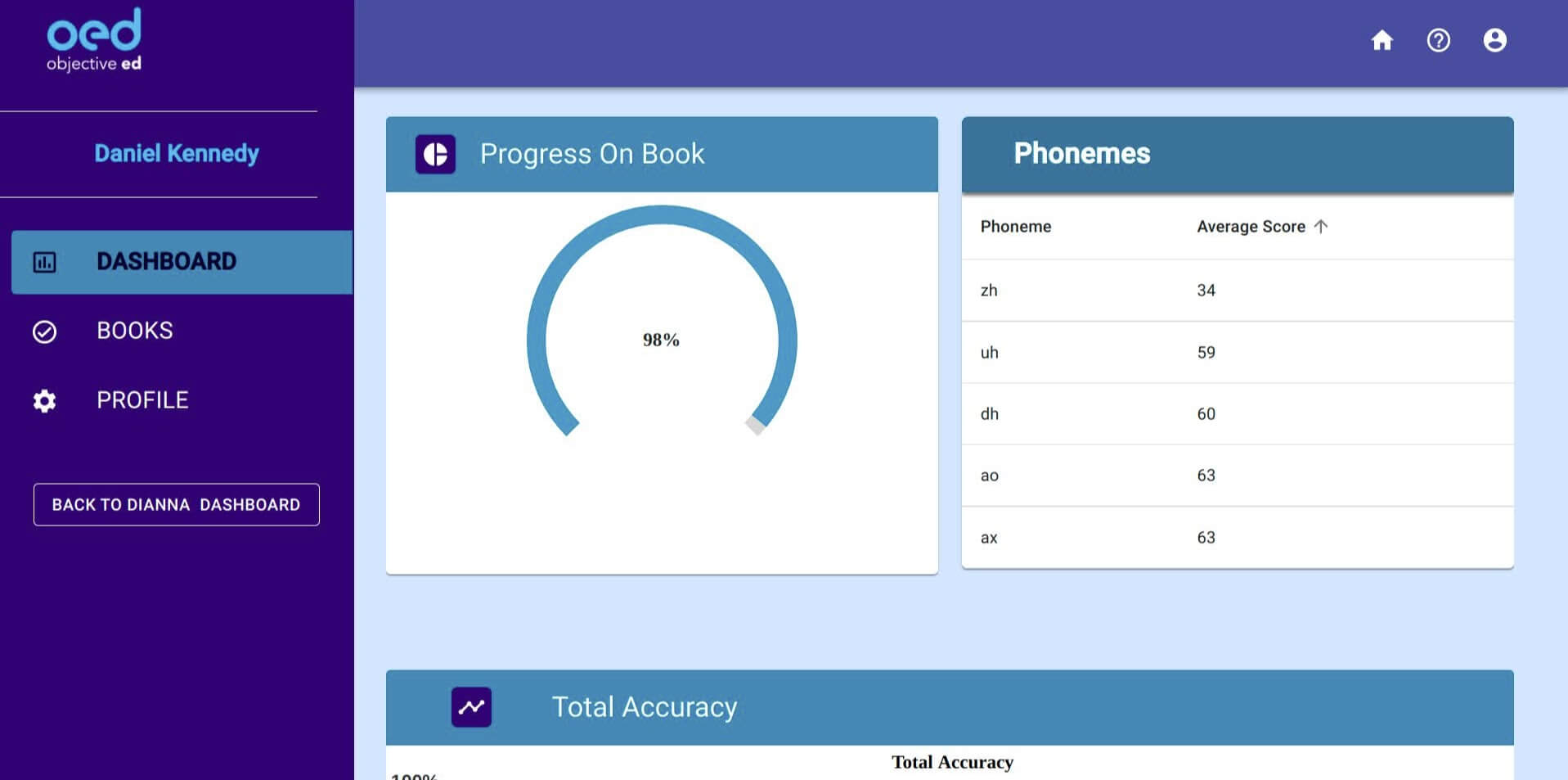
What about the BuddyBooks Parent Dashboard? What Information Does it Share?
The parent dashboard inside BuddyBooks is laid out very simply, but it’s filled with helpful information for parent-teachers. I’ve included screenshots from our dashboard for greater clarity.
When you first log in to your parent account, you’ll see your student’s profile, with the daily reading time for the last 7 days. If your student has used BuddyBooks for 15 minutes or more, you’ll see a green check. Otherwise, you’ll see a red X. For older, independent students, it’s a quick way to double-check their efforts.

You’ll also see Progress on Book, which shows a percentage completed on the student’s current book.
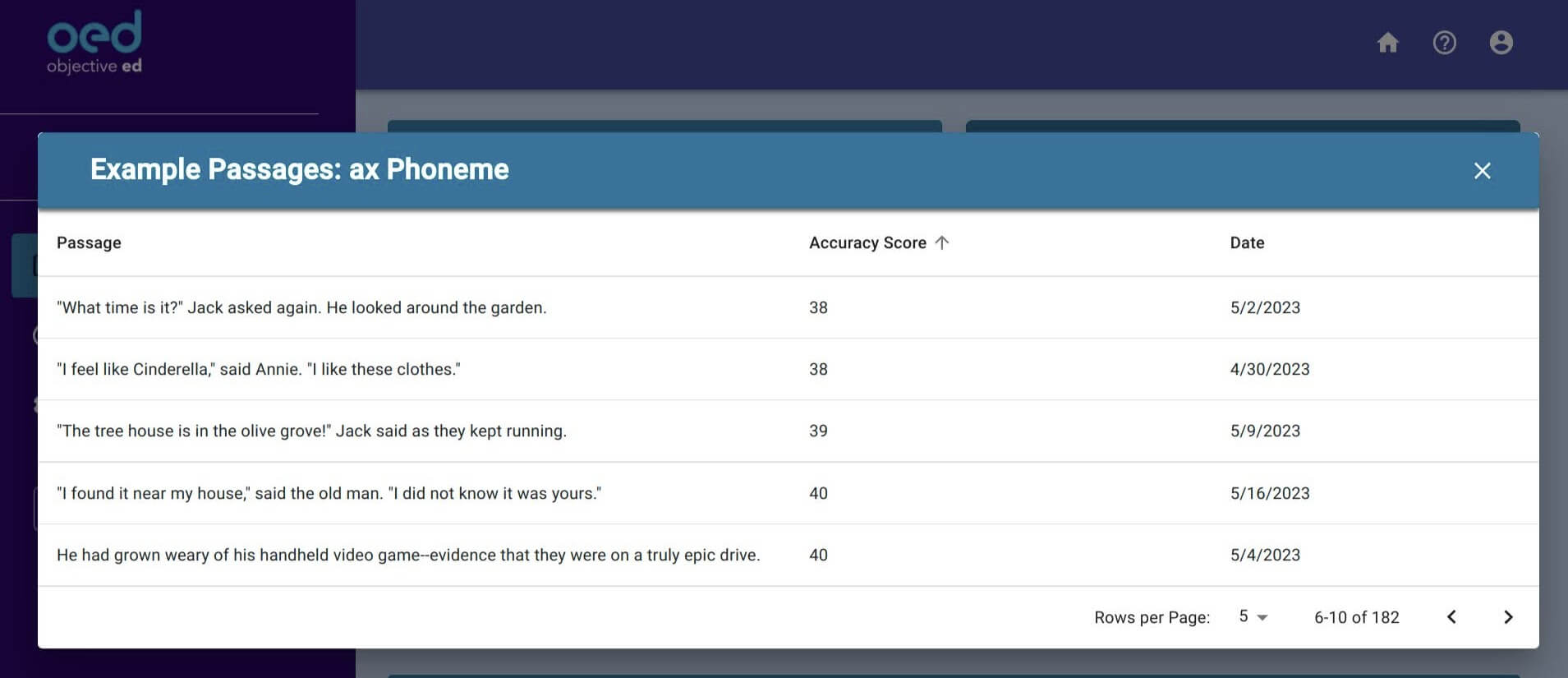
There’s a Phonemes section, which will list phonemes and average accuracy. You can click on the phoneme and read the passages where the phoneme was read. This is helpful for me, as we’re also managing some articulation issues with him, that can affect the accuracy of his reading.
You’ll also see Total Accuracy, expressed in a percentage, as well as the Words Correct Per Minute graph.
This Words Correct Per Minute Graph was particularly helpful for me, as we struggle with finding books that Daniel can read aloud fluently, and that still keep his interest level. The graph measures the student’s effort and results in three levels: challenge, instructional, and fluent. Daniel’s scores fluctuated, but I’ve noticed that he’s fluent with the books that he deems ‘too babyish’, but struggled with books that were more in his interest level. (Fablehaven by Brandon Mull) To keep him from getting frustrated, I’m aiming for a score in the higher instructional to fluency level.
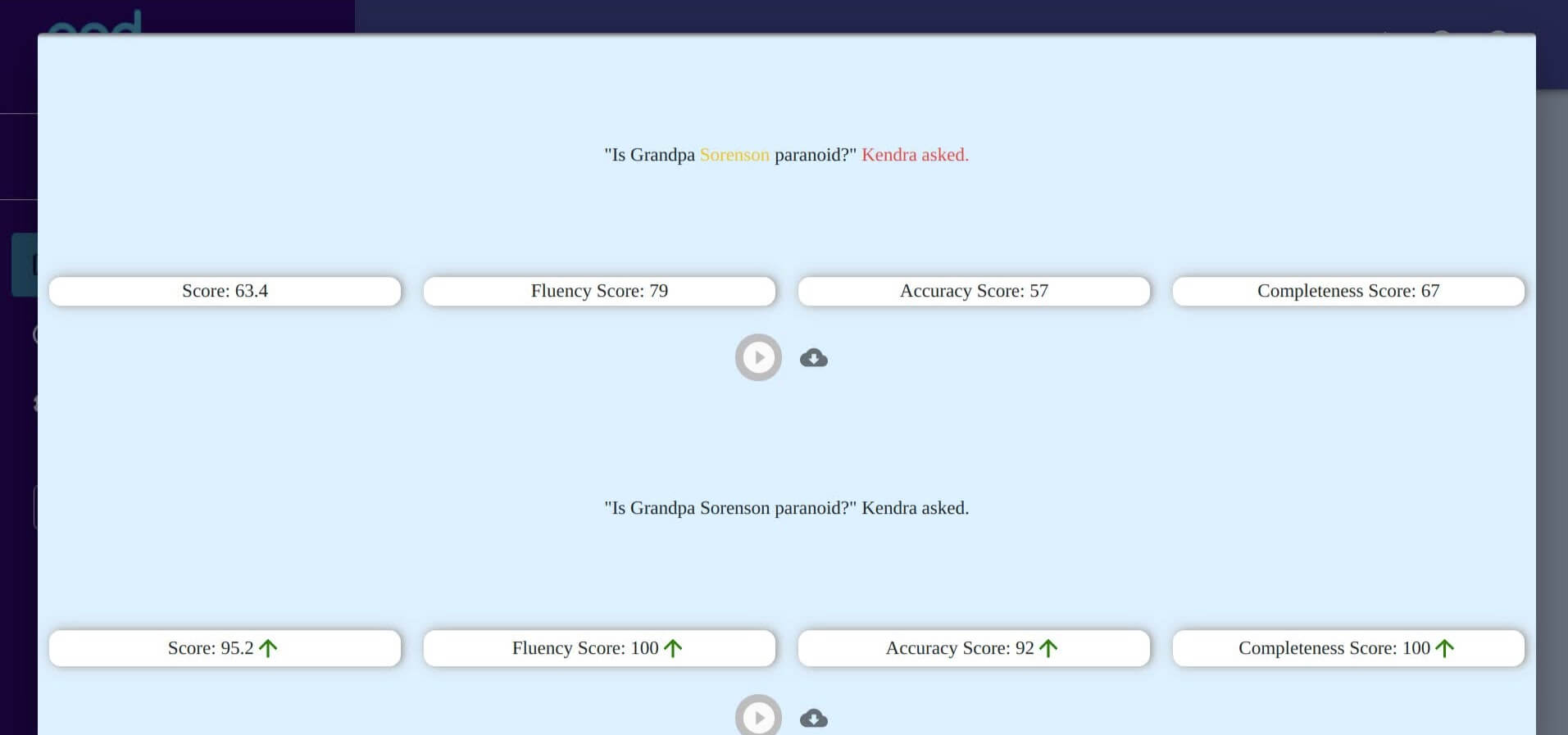
Last, you’ll see review mode, which is so helpful as a parent.
Since the BuddyBooks platform is recording the student’s efforts, the data is analyzed daily. Each day a student logs in, there will be a review mode that pops up from the previous lesson. This will be a section that was read incorrectly or incompletely.
The student will hear their reading of the passage, then be given an attempt to try again. It’s a big confidence booster for them to have a ‘do-over’.
As a parent, it’s helpful for me to see the area where my student had trouble. I can even play back the recordings in the dashboard and listen to the attempts to hear the improvements. This lets me know about trouble spots, so I can target our phonics instruction.
How Much Does BuddyBooks Cost?
The BuddyBooks platform is $19.99 per month or $199 per year for one student. If you’ve ever researched dyslexia tutoring, you’ll immediately recognize that the BuddyBooks platform is incredibly affordable. (Dyslexia tutoring can run from $45-$75 per hour in my area!)
ObjectiveEd is offering a generous coupon code, but you’ll have to act fast. You can use the coupon code JQ-DK to save $100. This Coupon expires July 16, 2023.
If you’re struggling to stay consistent with reading practice, BuddyBooks will definitely lighten your load.

Leave a Reply